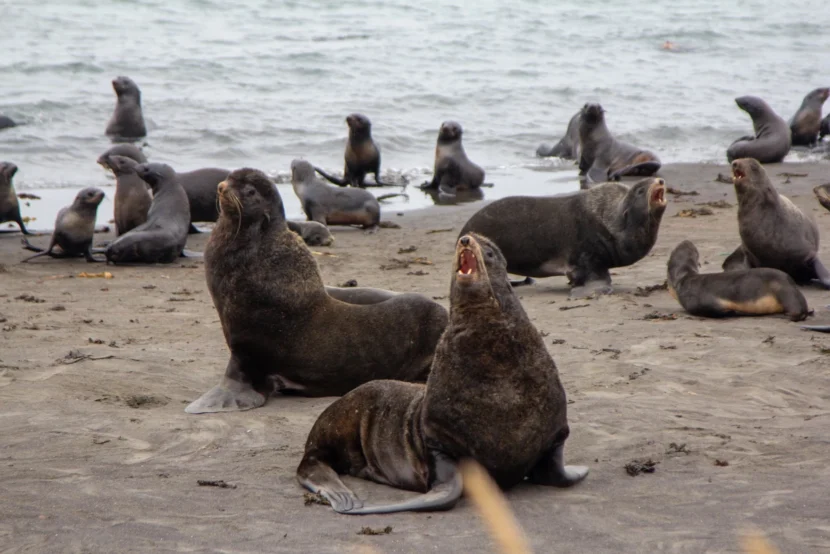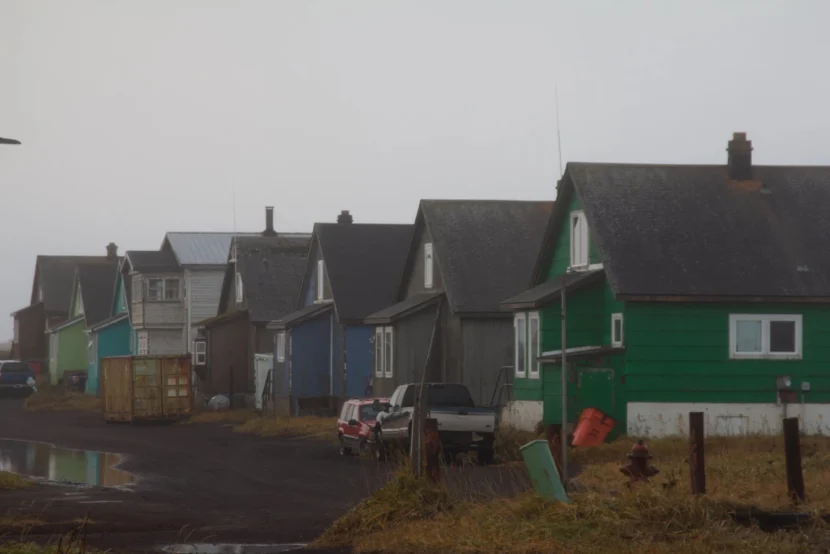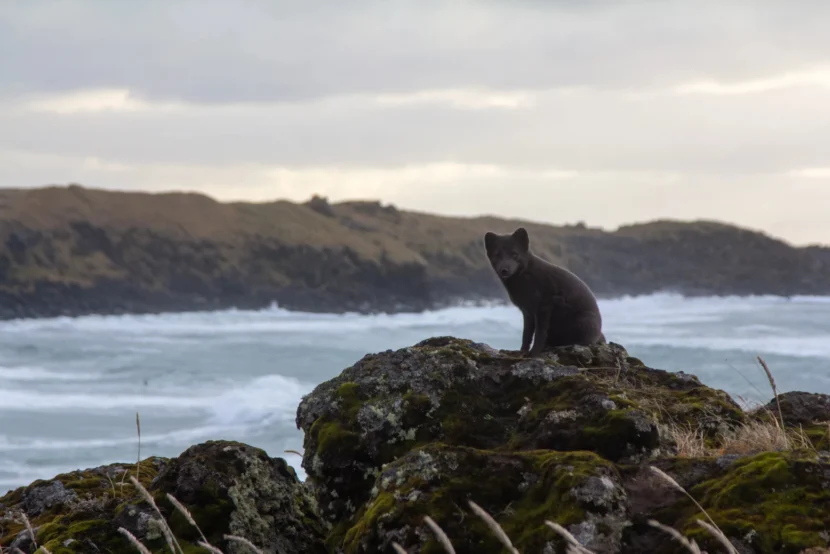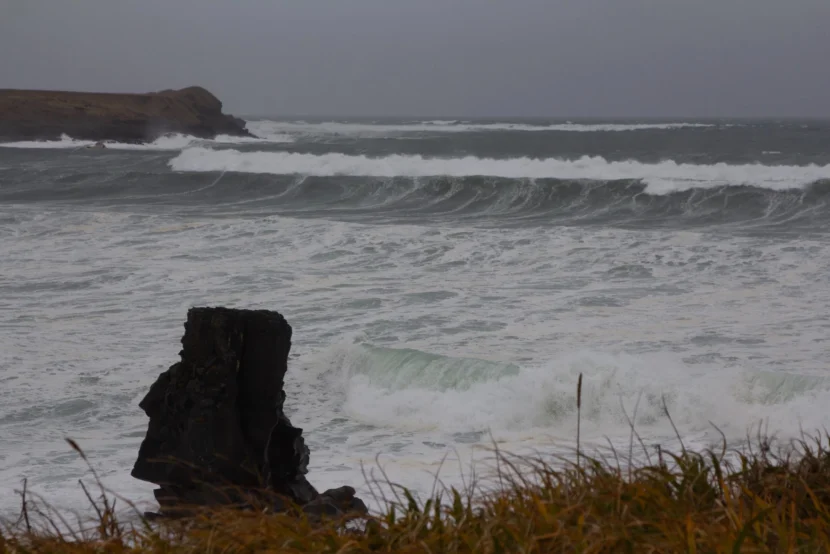
Everyone around St. Paul knows Zinaida Melovidov as Grandma Zee. She grew up working in the community’s blubbering shop, back when the local economy revolved around the commercial fur seal harvest. Even then, she said, people worried about what would happen if the island’s seals, birds and other marine life disappeared.
“My mom and dad used to talk about this years ago,” she said. “I didn’t understand. Now I know. No more seals, no more food, no more birds.”
St. Paul Island, in the Bering Sea, is home to vast marine ecosystems that have supported the Unangax̂ community for generations. But the island’s most iconic species — the northern fur seal — has been in steep decline for decades.
“They’re all declining,” Melovidov said. “I remember rookeries used to be millions, thousands in every rookery around the island — all full of seals. Now it’s empty.”

About half of the world’s northern fur seals breed in the Pribilofs. The population fell sharply when Russian fur traders set up an outpost in the Pribilofs in the late 1700s. And numbers kept falling in the twentieth century — the Pribilof Island population dropped by about 50% between the 1950s and 1998, prompting the National Oceanic and Atmospheric Administration to classify them as “depleted” under the Marine Mammal Protection Act.
But a recent push to protect St. Paul’s sea life met with strong resistance, especially from fishing interests. Now, St. Paul’s tribal government is moving forward with a new plan — one that prioritizes local and traditional knowledge in managing the island’s rich marine resources.
A push for a national marine sanctuary
St. Paul Island is 30 miles from the Eastern Bering Sea shelf. The surrounding waters are among the most productive marine environments globally, supporting dense populations of pollock, crab, and other marine species. In 2022, the community’s tribal government — the Aleut Community of St. Paul Island — announced plans to seek a federal designation as a national marine sanctuary to protect those resources. It would have been the first marine sanctuary in Alaska, giving the tribal government a seat at the table with state and federal resource managers.

But the proposal faced significant pushback, prompting the tribe to change its approach. Commercial fishing groups were among the most vocal critics. Regional communities like Unalaska, whose economies rely heavily on fishing, also opposed the sanctuary. Even within St. Paul, some residents worried that the federal designation could jeopardize local fishing practices.
“People think, ‘Oh, federal and state governments would have the power, and they can regulate my fishing,’” said Destiny Bristol Kushin, who works with the tribe’s conservation office. “It’s more of, I call it a fear — a fear because fishing is a big part of our history, and you don’t really want to lose that.”
Tribal leaders repeatedly stated that the sanctuary would not curtail commercial fishing. Under the National Marine Sanctuary Act, fisheries management councils still would have had final authority over fishing regulations. But the assurances weren’t enough to calm critics.
Tribal Council President John Wayne Melovidov said the tribe ultimately decided in October to pause efforts to pursue the federal designation.
“We didn’t want to move forward with something that would be so controversial and potentially tear people apart instead of bring them together,” he said.
The proposed sanctuary will remain on NOAA’s nomination list, though tribal leaders said it is unlikely to go through without community support. NOAA expects to make a final decision within the next five years.
A new approach
Last fall, the tribe began holding listening events to hear from residents about how to protect the island’s ecosystems from threats such as climate change and overfishing. The eventual goal behind that work is designating the waters around St. Paul Island as an Indigenous marine stewardship area.
Kushin said the designation would allow the community to take control of its waters.
“It essentially gives the power to the people in the community,” she said. “And it gives us the opportunity to incorporate traditional knowledge into the decision making within this protected area.”

Indigenous marine stewardship areas are less common than government-declared protection areas, but their numbers are growing, following a global trend. California tribes created the first one in the U.S. in 2023. The designation lacks the legal framework and enforcement power of a national marine sanctuary, but it does emphasize local leadership while bringing in less federal and state oversight.
Tribal leaders have not firmed up details like what the boundaries and regulations would be. Melovidov said the tribe is still working with community members to develop a cohesive plan. And he said local participation will be key to its success.
“Nobody else is going to come in and save the day,” he said. “So, we feel the need to take it upon ourselves to do something about the downturn of the ecosystem in our backyard.”